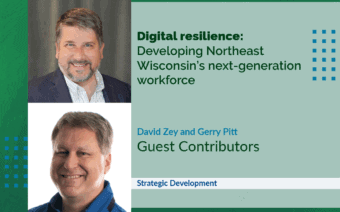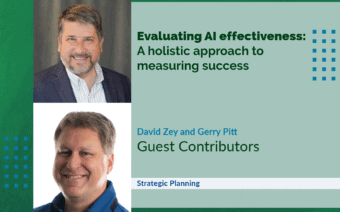
March 20, 2024
Artificial Intelligence (AI) has emerged as a digital assistant par excellence, transforming the way we approach tasks and manage our time.
Imagine acquiring a helper who listens to you, talks thoughtfully and respectfully to you and doesn’t whine.
It’s akin to gaining the perfect child!
What you gain
The advent of AI in our daily lives is like hiring a highly creative assistant who can brainstorm and ideate alongside you, making the process of generating ideas both fun and effortless.
This assistant is comparable to a well-informed middle schooler, knowledgeable across a myriad of topics, yet occasionally biased and prone to fabrications.
From handling mundane tasks involving data manipulation, document creation and summarizing information, AI serves as an invaluable time-saver, often delivering accurate results.
However, integrating AI into your workflow transforms you into a manager of sorts, with AI as your direct report.
While you delegate tasks to AI, you remain accountable for the outcomes.
This responsibility is relatively manageable when AI is tasked with simple chores like drafting a grocery list.
The stakes rise significantly when employing AI for critical tasks such as screening job applicants or summarizing legal or financial data, where accuracy and bias become paramount concerns.
What you need to know
In the business realm, understanding your team and their processes is essential — a concept known as governance.
Governing AI is crucial since you are accountable for its output.
Large Language Models (LLMs) are often described as “black boxes” due to their opaque nature, making it challenging to discern the biases and reasoning behind their outputs.
With an average “hallucination” rate of 5% among major AI chatbots as of the last quarter of 2023, it’s vital to question whether such a margin of error is acceptable in various contexts, from casual use to professional decision-making.
What is actually at stake?
The convenience of AI tempts us to relinquish control and trust it implicitly with outcomes.
However, giving up responsibility can cause harm to ourselves and others, and others may hold us accountable for accepting the choices made by AI.
Without proper governance and an understanding of AI’s limitations, we risk losing our personal agency and facing criticism for its inaccuracies.
Reasonable safeguards of accountability
To navigate the dual edges of AI productivity, it’s crucial to maintain a healthy skepticism.
Do not regard AI as a peer or trusted advisor without question.
Regularly audit its output for accuracy and reliability, recognizing that AI models and your prompts can change over time.
Exercise discernment and assume the role of the final judge on AI’s utility, ensuring you are comfortable with its use and understand its limitations.
Staying informed through training and updates on AI’s capabilities and risks is essential.
Additionally, fostering accountability within a community of peers can help identify blind spots and establish shared expectations for AI’s role in our lives, businesses and communities.
While AI offers significant benefits as your perfect child, you are still responsible for how it behaves and if you can be seen in public with it.
By embracing these principles of governance and accountability, businesses and individuals can harness the full potential of AI as responsible citizens, advocating for policies that address its challenges and maximize its societal benefits.
 New Mid-State manufacturing, engineering technology center result of community partnership
New Mid-State manufacturing, engineering technology center result of community partnership Big Guns Tattoo making a big impact in Fox Valley
Big Guns Tattoo making a big impact in Fox Valley








